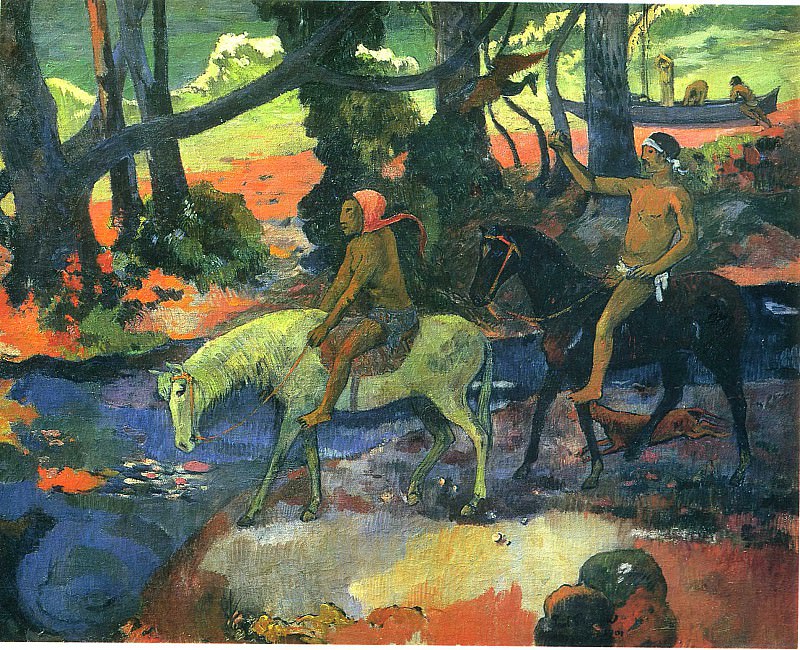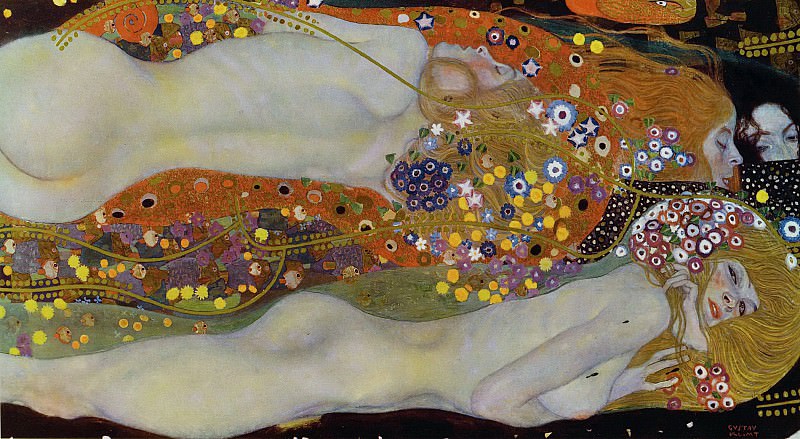Exploring the World of Avant-Garde Art
Avant-garde art represents a dynamic and constantly evolving frontier in the creative world, where traditional norms are challenged and new possibilities are explored. Originating from the French term meaning "advance guard," avant-garde art is characterized by its innovative and experimental approach. It is a genre that consistently pushes the boundaries of art and culture, questioning established conventions and introducing groundbreaking ideas.
Historical Context and Development
The roots of avant-garde art can be traced back to the late 19th and early 20th centuries, a period marked by rapid social, political, and technological changes. The Industrial Revolution and the upheavals of World War I and II had profound impacts on society, influencing artists to break away from traditional forms and seek new modes of expression. This era witnessed the emergence of movements such as Impressionism, Cubism, Futurism, and Dadaism, all of which contributed to the avant-garde tradition. These movements sought to capture the essence of modern life and challenged conventional aesthetics, leading to a radical rethinking of artistic practices.
Impressionism, for instance, introduced a new approach to capturing light and color, moving away from the detailed and realistic depictions of previous periods. Cubism, pioneered by Pablo Picasso and Georges Braque, fragmented objects into geometric shapes, representing multiple perspectives simultaneously. Futurism, with its focus on speed, technology, and movement, celebrated the dynamism of the modern world. Dadaism, emerging in the aftermath of World War I, rejected logic and embraced absurdity as a form of protest against the chaos of the time.
Core Characteristics and Themes
Avant-garde art is distinguished by its emphasis on innovation, experimentation, and the breaking of traditional boundaries. One of its core characteristics is the rejection of conventional aesthetics and norms. Avant-garde artists often explore new materials, techniques, and forms, challenging viewers to reconsider their perceptions of art. This approach is evident in various forms, from abstract paintings and conceptual installations to performance art and digital media.
Themes in avant-garde art frequently revolve around the exploration of identity, society, and the human condition. Artists use their work to critique social structures, express personal and collective experiences, and provoke thought. The avant-garde movement often engages with contemporary issues, reflecting and responding to the cultural and political climate of its time. This engagement with current events and social issues contributes to the relevance and impact of avant-garde art.
Notable Avant-Garde Movements and Figures
Throughout history, several avant-garde movements have played pivotal roles in shaping the art world. Each movement brought its own unique perspective and methodology, contributing to the rich tapestry of avant-garde art.
Surrealism, for example, emerged in the 1920s and was heavily influenced by the theories of Sigmund Freud and the exploration of the unconscious mind. Surrealist artists, such as Salvador Dalí and René Magritte, created works that combined dreamlike imagery with bizarre and often unsettling scenarios. Their art aimed to challenge the boundaries of reality and explore the depths of the human psyche.
Abstract Expressionism, which gained prominence in the mid-20th century, focused on spontaneous, emotive expression. Artists like Jackson Pollock and Mark Rothko employed techniques that emphasized the physical act of painting and sought to convey raw emotion through abstract forms. This movement emphasized the artist's inner experience and aimed to engage viewers on an emotional level.
Conceptual Art, emerging in the 1960s, shifted the focus from the physical object to the idea behind the work. Artists such as Sol LeWitt and Marcel Duchamp questioned the nature of art and its definition, emphasizing that the concept or idea was of greater importance than the finished piece itself. This movement highlighted the intellectual and philosophical aspects of art, challenging traditional notions of aesthetics and craftsmanship.
Impact and Influence
The avant-garde movement has had a profound impact on the art world and beyond. Its influence extends to various disciplines, including literature, theater, film, and architecture. Avant-garde principles have inspired a wide range of creative practices and continue to shape contemporary artistic expression.
In literature, avant-garde writers experiment with narrative structures, language, and form. The works of authors like James Joyce and William Burroughs reflect avant-garde sensibilities through their innovative use of language and narrative techniques. Similarly, in theater and film, avant-garde artists challenge traditional storytelling methods and explore unconventional approaches to performance and representation.
Architects and designers have also drawn inspiration from avant-garde art, incorporating experimental techniques and forms into their work. The deconstructivist architecture movement, for example, emerged as a response to the rigid principles of modernism and embraced fragmented, non-linear designs that reflect the complexity of contemporary life.
The Future of Avant-Garde Art
As we move further into the 21st century, avant-garde art continues to evolve and adapt to new technologies and cultural shifts. Digital media and the internet have opened up new possibilities for artistic expression, allowing artists to experiment with virtual realities, interactive installations, and multimedia works. The rise of social media platforms has also transformed the way art is created, shared, and experienced, providing new avenues for engagement and collaboration.
The future of avant-garde art will likely see continued innovation and experimentation, with artists pushing the boundaries of technology and traditional artistic practices. As society grapples with complex global challenges and rapidly changing environments, avant-garde art will remain a crucial space for exploring new ideas, questioning assumptions, and envisioning alternative futures.
In conclusion, avant-garde art represents a bold and transformative force within the art world. Its commitment to innovation, experimentation, and the questioning of established norms has made it a powerful vehicle for creative expression and cultural commentary. As we look to the future, the avant-garde tradition will undoubtedly continue to inspire and provoke, shaping the evolution of art and culture in exciting and unexpected ways.
Avant-garde art represents a dynamic and constantly evolving frontier in the creative world, where traditional norms are challenged and new possibilities are explored. Originating from the French term meaning "advance guard," avant-garde art is characterized by its innovative and experimental approach. It is a genre that consistently pushes the boundaries of art and culture, questioning established conventions and introducing groundbreaking ideas.
Historical Context and Development
The roots of avant-garde art can be traced back to the late 19th and early 20th centuries, a period marked by rapid social, political, and technological changes. The Industrial Revolution and the upheavals of World War I and II had profound impacts on society, influencing artists to break away from traditional forms and seek new modes of expression. This era witnessed the emergence of movements such as Impressionism, Cubism, Futurism, and Dadaism, all of which contributed to the avant-garde tradition. These movements sought to capture the essence of modern life and challenged conventional aesthetics, leading to a radical rethinking of artistic practices.
Impressionism, for instance, introduced a new approach to capturing light and color, moving away from the detailed and realistic depictions of previous periods. Cubism, pioneered by Pablo Picasso and Georges Braque, fragmented objects into geometric shapes, representing multiple perspectives simultaneously. Futurism, with its focus on speed, technology, and movement, celebrated the dynamism of the modern world. Dadaism, emerging in the aftermath of World War I, rejected logic and embraced absurdity as a form of protest against the chaos of the time.
Core Characteristics and Themes
Avant-garde art is distinguished by its emphasis on innovation, experimentation, and the breaking of traditional boundaries. One of its core characteristics is the rejection of conventional aesthetics and norms. Avant-garde artists often explore new materials, techniques, and forms, challenging viewers to reconsider their perceptions of art. This approach is evident in various forms, from abstract paintings and conceptual installations to performance art and digital media.
Themes in avant-garde art frequently revolve around the exploration of identity, society, and the human condition. Artists use their work to critique social structures, express personal and collective experiences, and provoke thought. The avant-garde movement often engages with contemporary issues, reflecting and responding to the cultural and political climate of its time. This engagement with current events and social issues contributes to the relevance and impact of avant-garde art.
Notable Avant-Garde Movements and Figures
Throughout history, several avant-garde movements have played pivotal roles in shaping the art world. Each movement brought its own unique perspective and methodology, contributing to the rich tapestry of avant-garde art.
Surrealism, for example, emerged in the 1920s and was heavily influenced by the theories of Sigmund Freud and the exploration of the unconscious mind. Surrealist artists, such as Salvador Dalí and René Magritte, created works that combined dreamlike imagery with bizarre and often unsettling scenarios. Their art aimed to challenge the boundaries of reality and explore the depths of the human psyche.
Abstract Expressionism, which gained prominence in the mid-20th century, focused on spontaneous, emotive expression. Artists like Jackson Pollock and Mark Rothko employed techniques that emphasized the physical act of painting and sought to convey raw emotion through abstract forms. This movement emphasized the artist's inner experience and aimed to engage viewers on an emotional level.
Conceptual Art, emerging in the 1960s, shifted the focus from the physical object to the idea behind the work. Artists such as Sol LeWitt and Marcel Duchamp questioned the nature of art and its definition, emphasizing that the concept or idea was of greater importance than the finished piece itself. This movement highlighted the intellectual and philosophical aspects of art, challenging traditional notions of aesthetics and craftsmanship.
Impact and Influence
The avant-garde movement has had a profound impact on the art world and beyond. Its influence extends to various disciplines, including literature, theater, film, and architecture. Avant-garde principles have inspired a wide range of creative practices and continue to shape contemporary artistic expression.
In literature, avant-garde writers experiment with narrative structures, language, and form. The works of authors like James Joyce and William Burroughs reflect avant-garde sensibilities through their innovative use of language and narrative techniques. Similarly, in theater and film, avant-garde artists challenge traditional storytelling methods and explore unconventional approaches to performance and representation.
Architects and designers have also drawn inspiration from avant-garde art, incorporating experimental techniques and forms into their work. The deconstructivist architecture movement, for example, emerged as a response to the rigid principles of modernism and embraced fragmented, non-linear designs that reflect the complexity of contemporary life.
The Future of Avant-Garde Art
As we move further into the 21st century, avant-garde art continues to evolve and adapt to new technologies and cultural shifts. Digital media and the internet have opened up new possibilities for artistic expression, allowing artists to experiment with virtual realities, interactive installations, and multimedia works. The rise of social media platforms has also transformed the way art is created, shared, and experienced, providing new avenues for engagement and collaboration.
The future of avant-garde art will likely see continued innovation and experimentation, with artists pushing the boundaries of technology and traditional artistic practices. As society grapples with complex global challenges and rapidly changing environments, avant-garde art will remain a crucial space for exploring new ideas, questioning assumptions, and envisioning alternative futures.
In conclusion, avant-garde art represents a bold and transformative force within the art world. Its commitment to innovation, experimentation, and the questioning of established norms has made it a powerful vehicle for creative expression and cultural commentary. As we look to the future, the avant-garde tradition will undoubtedly continue to inspire and provoke, shaping the evolution of art and culture in exciting and unexpected ways.




